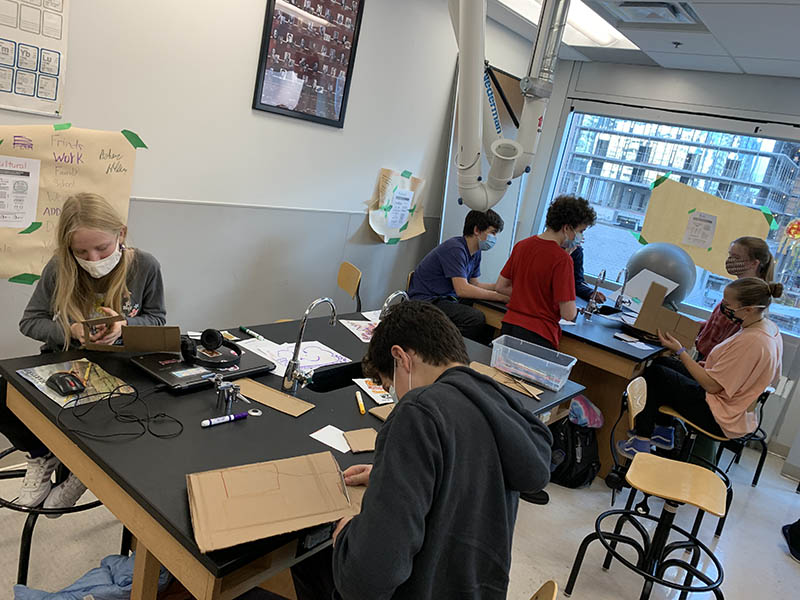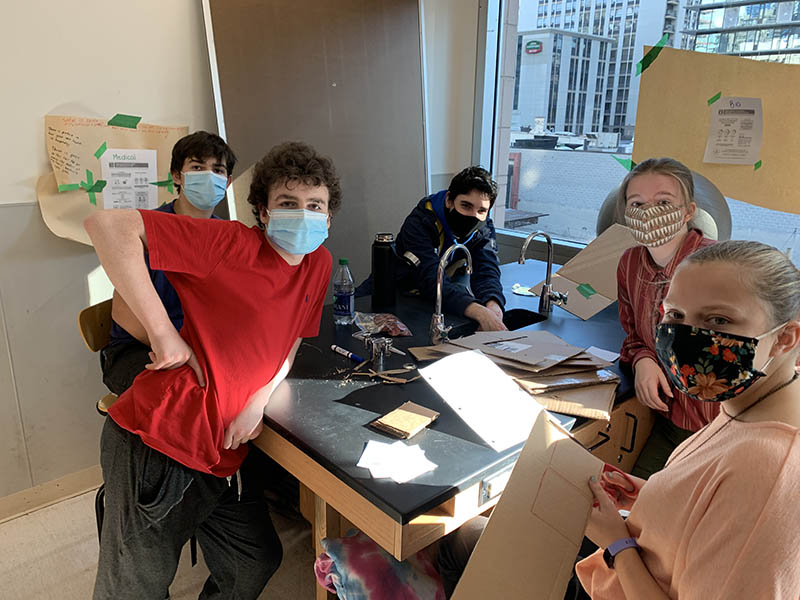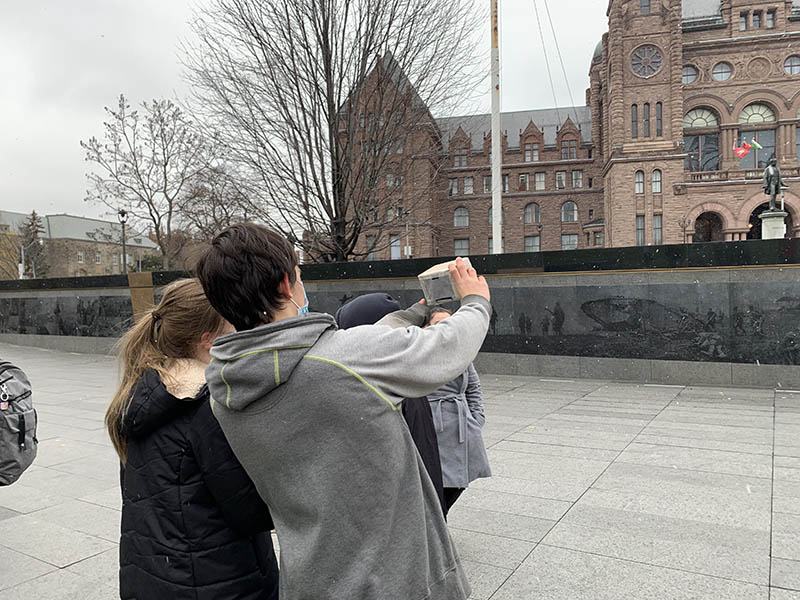Alex’s Exploring Technology has been learning about the design process and how it can be applied to urban planning. We began with research and brainstorming to explore what makes a neighbourhood a good place to live. Students generated lists of “look-fors,” and we furthered our research by heading out on a walk.
During the walk students worked in survey teams to notice aspects of the neighbourhood that make it a good place to live, and aspects that need improvement. Teams took photos as evidence, and marked important findings on a map. Back at school, they worked to record their findings on google earth.
One new insight gained during the walk was the importance of art and cultural spaces (murals, theatres etc.) in a neighbourhood.
Based on their explorations, students worked on designing their own prototype neighbourhoods. Some students used Minecraft to create neighbourhood layouts. Others worked on creating a physical model of an ideal neighbourhood.




























